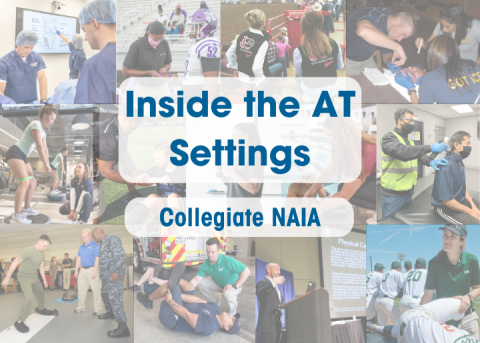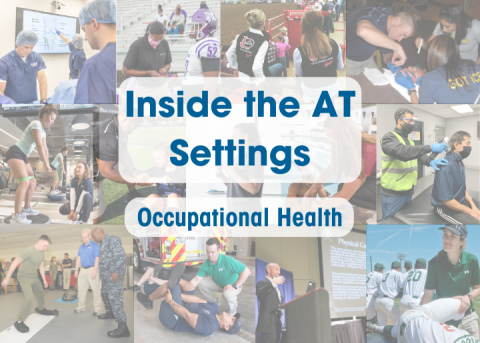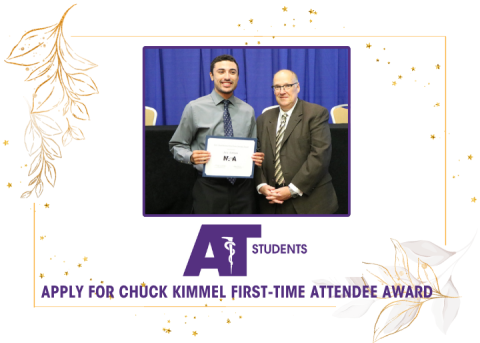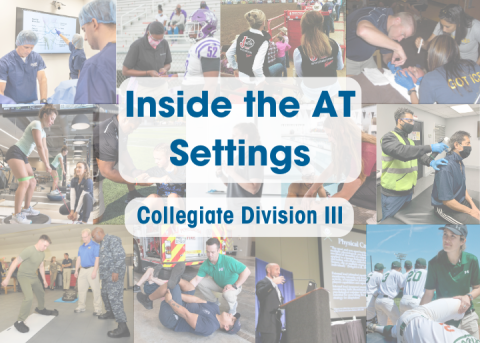
In honor of Asian/Pacific American Heritage Month in May, the NATA Now blog is highlighting some of our Asian American and Pacific Islander leaders at the state, district and national levels.
Ruemruk Malasarn, MA, ATC, fell in love with the athletic training profession and its work environment, while taking an introduction to athletic training course and interning as a California State Polytechnic University Pomona (Cal Poly Pomona) undergraduate student, he said.
However, his interest for the profession stemmed from his original passion to participate in the world of sports and the strong health care influence of his mother, who has been a registered pediatric nurse for over three decades, he said.
Malasarn has served as the Far West Athletic Trainers’ Association Student Scholarship Fundraising and Golf Tournament Director for 11 years and a FWATA annual meeting volunteer since 2000. Now an assistant athletic director for sports performance at Cal Poly Pomona and serving as the FWATA Annual Meeting & Clinical Symposium commissioner, Malasarn said he has worked with many people and upholds representation as a way to highlight equitable accessibility of opportunities in the profession.
“Representation is a way to show the equality of opportunities and an outcome of a strong belief in diversity and inclusion, in this case, within a professional organization,” he said.
Read on to learn more about his leadership and impact.
What was your first volunteer position within the athletic training profession and why did you get involved?
I was asked by a colleague to volunteer to help with the District Eight annual meeting committee in my first year working with him. I was essentially a “go for” for two years, helping with anything that needed to be done and doing a lot of observing and learning.
Tell us about your current position as the FWATA Annual Meeting & Clinical Symposium Committee commissioner and what you hope to accomplish in this role.
I am completing my 10th year serving as the FWATA Annual Meeting & Clinical Symposium commissioner. My primary goals, when first taking on the responsibility, were to build and offer a strong educational program while creating an enjoyable professional environment for athletic trainers to come together, network and be social. There was also a need, at the time, to update our operations and membership experience at the meeting when it came to technology and resources. Athletic trainers work so hard all year long, often with limited contact with other athletic trainers or health care professions outside of their network. We wanted to create a great event that sports medicine professionals are excited about each year. District Eight is very fortunate to have locations such as Las Vegas, San Diego and properties in Hawaii to host our event.
How has volunteering helped you grow personally and professionally?
I have had the opportunity to meet and work with so many incredible people. Over time, these athletic trainers have become great mentors, friends and my extended family. I have learned a great deal about myself and the true joy of serving our profession.
Why is representation in leadership important and how does it impact the profession?
Representation in leadership shows the evolution of diversity in athletic training. Although I rarely think of myself as an Asian American/Pacific Islander athletic trainer, I still understand the impact and value it can have in being seen by someone with a similar or related cultural or social background. Representation is a way to show the equality of opportunities and an outcome of a strong belief in diversity and inclusion, in this case, within a professional organization.
Why should ATs get involved in leadership and service?
First and foremost, in a profession like athletic training, it’s needed. Individuals who are passionate, have a greater vision or just want to be involved to move the needle have created so much growth and change in our profession. Leaders and volunteers have made athletic training a recognizable and integral part of the health care system, built strong educational foundations for students and created measurable changes in equality in the profession. The list goes on.
What advice do you have for other athletic trainers who want to give back to the profession?
Just start. You don’t need to jump into some huge groundbreaking role. Focus on something within athletic training that interests you. Find a place within your network or near your workplace and go to a function. Reach out to your district director, state leadership and district committee members. You will quickly find that what you give to the profession as a volunteer will give you back so more than you could ever expect. And you’ll be surrounded by people who will energize you and remind you of why you were drawn to this profession.





